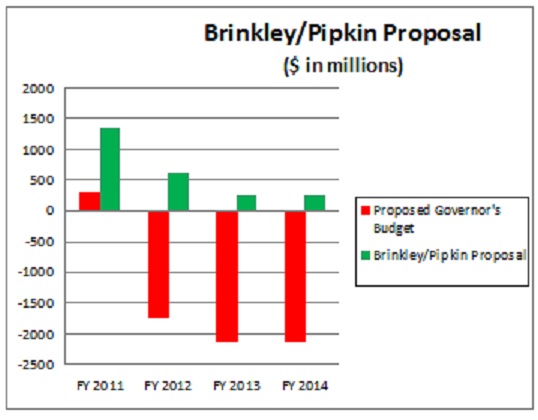It wasn’t how you’d expect the political career of a man who served as Minority Leader of the Maryland State Senate – and who was brash enough to seek statewide office just two scant years after upsetting a longtime incumbent to enter the Senate in the first place – to end. But no one ever said E.J. Pipkin did the expected as a politician.
In a letter written on Maryland Senate stationery but addressed as a “Letter to the Editor”, I found this in my e-mailbox tonight:
Dear Sir,
First, I want to thank the citizens of the Upper Shore and the State of Maryland for giving me the honor of representing them in the Maryland Senate. My eleven years in the General Assembly has been a time of challenge as a Republican, a time of accomplishment as a State Senator and a time when I have learned much about people and what can be achieved when people are determined.
One’s responsibilities to family and oneself often change the direction of life. So, it is with regret that I am resigning as Senator from District 36. My last day will be Monday, August 12, 2013. I will carry with me both the bitter and the sweet memories of the past eleven years. My family will be moving to Texas, where I will pursue studies at Southern Methodist University for a Masters of Science in Sport Management.
I chose to resign now, rather than serve out my term, which ends in January 2015, in order to give the Republican who fills the 36th District Senate seat the advantage of serving the people until he or she runs for re-election.
Again, I want to thank you for giving me the opportunity and honor to serve as your representative.
Sincerely,
E.J. Pipkin
I’d actually first heard this at our Central Committee meeting this evening. But while the multimillionaire Pipkin follows his dream of higher education, those in his district have to consider a successor and, for the rest of us, the battle to become new Minority Leader among the other eleven Republican Senators is on.
I’ll look at the successor first. The obvious choice would be to elevate one of the three sitting Delegates from the district – who are all Republicans – to serve as the new Senator. In terms of seniority in the House, there is no contest because Delegate Michael Smigiel was elected in the same 2002 election which saw Pipkin win office. The other two Delegates, Steve Hershey and Jay Jacobs, were first elected in 2010. Smigiel also has the advantage of greater name recognition as he’s taken a lead role in the fight to uphold our Second Amendment rights.
Moreover, elevating Smigiel could allow the Central Committees within District 36 to correct a grievous wrong which has affected Caroline County for several years – it is the only county in Maryland without a representative in Annapolis, basically owing to its small population and unfortunate geographical position of always being part of large, multi-county districts. While District 36 covers all or part of four counties, the Cecil County portion is also in two other House districts, with District 35A being exclusive to the county.
On the other hand, the race for Minority Leader boils down to just a few possibilities. Starting with the eleven remaining Senators, we can probably throw out three who are leaving the Senate next year: Nancy Jacobs is retiring, while Allan Kittleman and Barry Glassman are seeking County Executive posts in their native counties.
Senator David Brinkley, though, served as Minority Leader for two years (2007-08) and more recently was Minority Whip (2010-11). His counterpart George Edwards was the House Minority Leader from 2003 to 2007 under Governor Ehrlich, though.
The only other members with leadership experience in the General Assembly: Senator Joseph Getty was a Deputy Minority Whip in the House from 1999-2002, and he was succeeded by fellow Senators Christopher Shank from 2002-03 and J.B. Jennings from 2003-06. Shank was Assistant Minority Leader from 2003-06, though.
Since it’s probably going to be more or less of a caretaker role I wouldn’t be surprised if Brinkley doesn’t get another turn, although the newer members may want a fresh start with a new face. With only 11 votes (or 12 if a new Senator from District 36 is selected before the leadership change) the winner only has to convince five or six others.
Such is the sad state of affairs for Maryland Republicans when a former statewide candidate decides a gig in a master’s program is better than politics. I must say, though, it’s a good exercise in citizen legislation since Pipkin wasn’t a lifer and went on to something new after 11 years. I wish him the best of luck in Texas, and suspect he’ll like it there.


